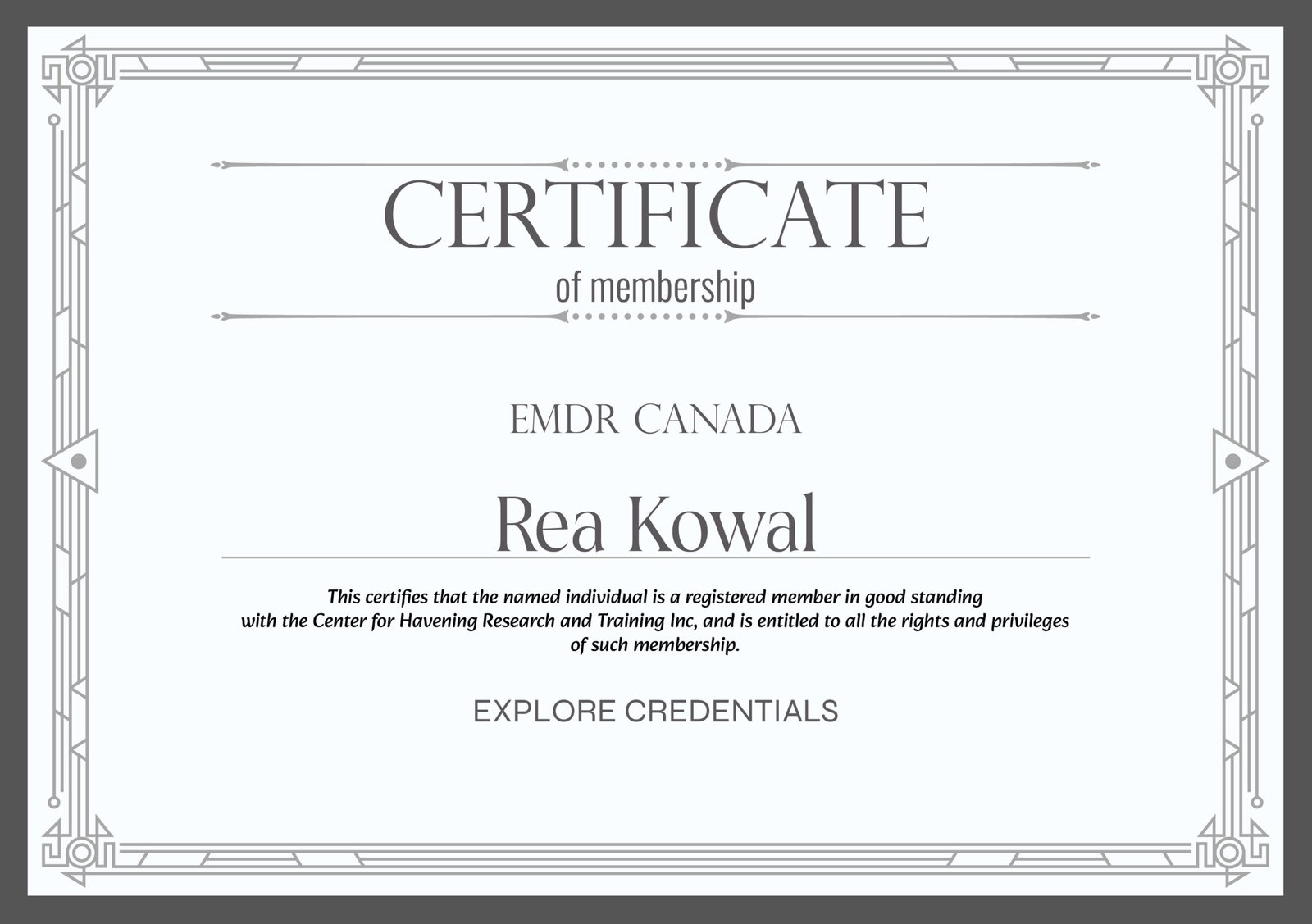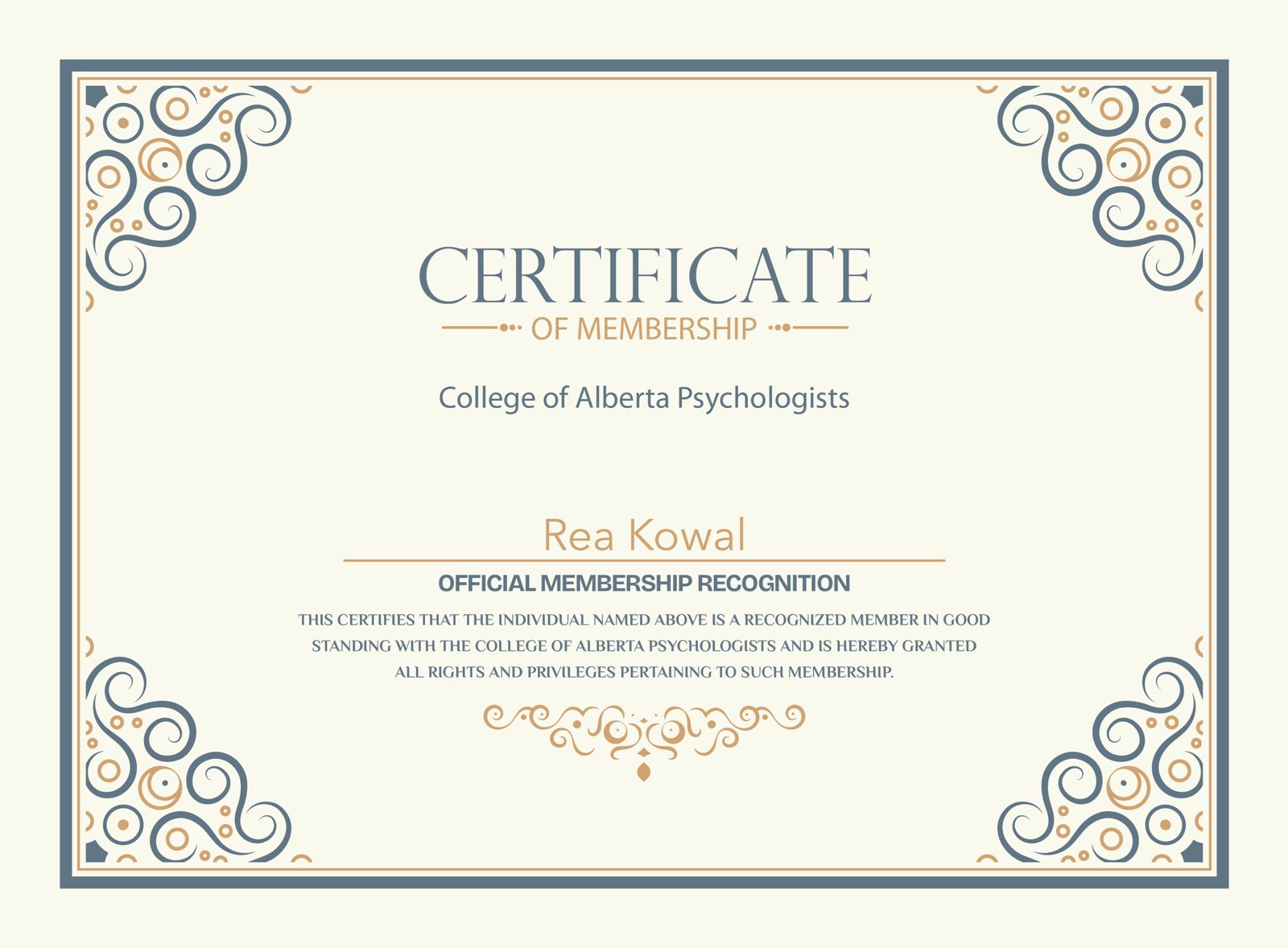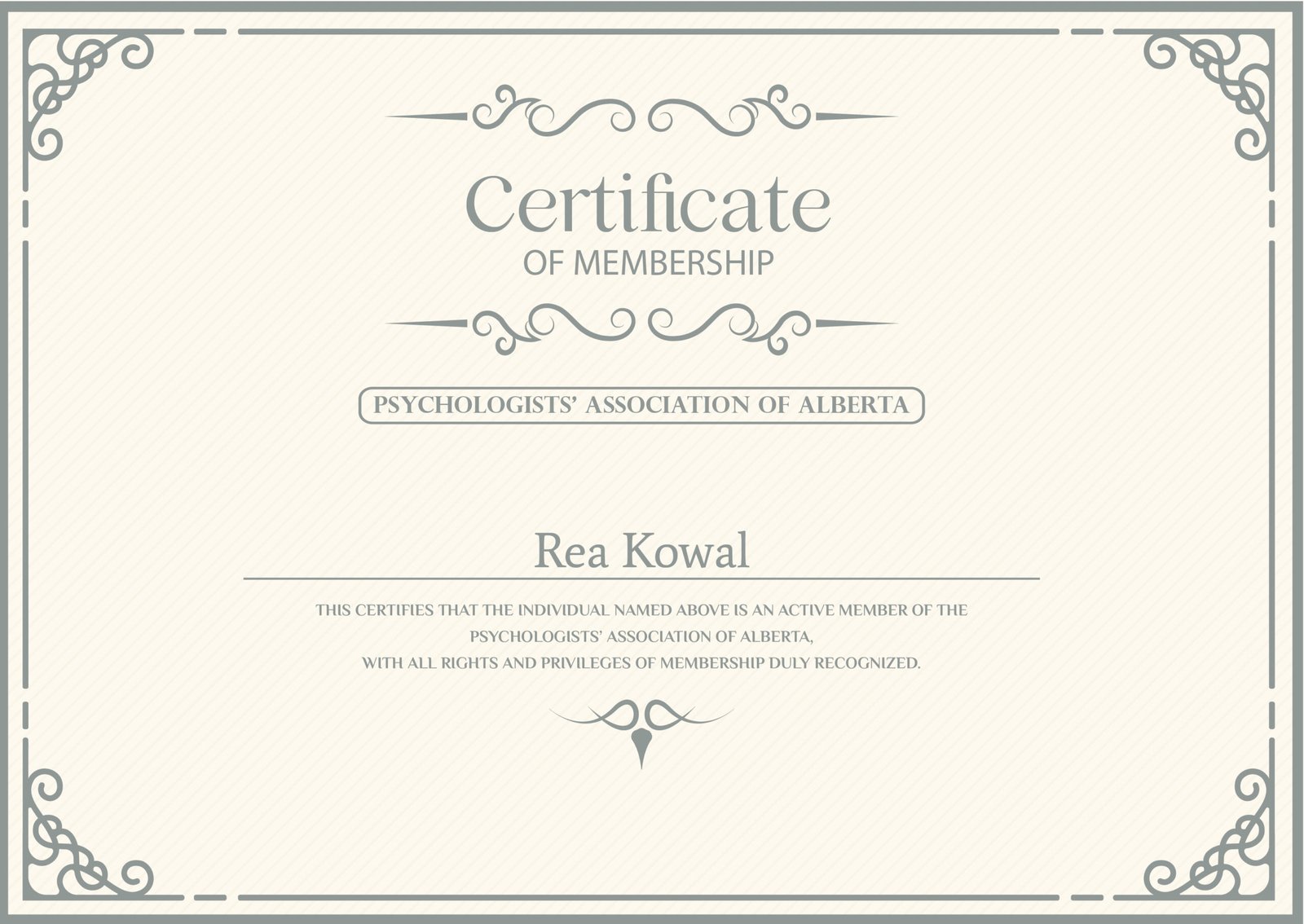
Rea Kowal BN, M Couns
Rea is a registered psychologist with over 45 years experience in coaching and the helping professions. She views psychological symptoms as a normal response to unresolved trauma; where trauma is defined as stress at a level that exceeds our ability to cope or make meaning of what is happening. You are not crazy or broken! Changes to neural structure and function caused by trauma can lead to difficulty with emotional regulation, memory issues, impaired cognitive function, unhealthy relationship patterns, and altered sense of self.
Rea uses cutting-edge treatment modalities that activate innate neuroplasticity to heal and repattern the brain, including Eye Movement Desensitization and Reprocessing (EMDR), Brainspotting, Accelerated Resolution Therapy, Comprehensive Resource Mode (CRM), and Internal Family Systems (IFS). In collaboration with her clients, these evidence-based “power therapies” are blended in wrap-round fashion according to individual needs to create long-lasting and positive change. Clients will experience a “global shift” in felt sense and functioning.
Rea offers trauma-informed therapy for a broad range of issues, and specializes in adult PTSD, complex/developmental trauma, attachment issues, dissociation and performance enhancement. She draws on experience as a psychologist, registered nurse, competitive figure skater and coach in her work with individuals, couples and families. Insight gained through her roles of wife, mother, and grandmother allow a deeper understanding of issues through the lifespan.
Psychotherapy
is seen as both a craft and a science and is based on the belief that we become who we are in relation to others (namely our primary attachment figures). Of note is that 75 percent of ALL human knowledge is attained by the age of five years! Hence psychotherapy takes aim at the underlying or deeper level of core beliefs that individuals hold about themselves, life, and relationships. In other words, the client’s map of the world. Of note is that core beliefs are stored deeply in the brain in areas not accessible by ‘talk therapy’. Changing these can transform function on a ‘global’ level. With this in mind, Rea relies predominantly on the new, ‘power therapies’: EMDR (Eye Movement and Desensitization Reprocessing),

Brainspotting
Brainspotting is a therapeutic technique developed by Dr. David Grand in 2003. It is used to help individuals process trauma, emotional distress, and other psychological challenges by accessing and resolving the root causes of these issues stored in the brain and body. It is often considered an extension or evolution of Eye Movement Desensitization and Reprocessing (EMDR), although it has its own unique approach.
It is based on the core principle that where you look can influence how you feel. The therapist guides the client to find specific eye positions that correspond to areas of emotional or physical stress. These “brainspots” are locations in the visual field that can link to unprocessed trauma or negative emotions. Brainspotting recognizes that trauma is often stored in the body and can influence emotional and physical responses. By focussing on certain eye positions that correspond to certain memories and emotions, the body and mind naturally process these stored experiences leading to a sense of relief and resolution. The brain is believed to integrate the newly processed information, allowing the individual to move forward in a healthier and more adaptive way.
Brainspotting is used for Trauma (PTSD, developmental trauma), Anxiety, Depression, Stress-related disorders, Performance enhancement (e.g., athletes, artists), Addictions, and grief and loss.
David Grand explains Brainspotting
Counselling
on the other hand, takes more of a surface approach to helping individuals to deal with the vicissitudes of daily hassles and stress of life. Counselling involves fully listening to what people have to say, providing support and strategies, and helping with problem solving.
Approach
Mental health issues do not occur in a vacuum. Whether longstanding or recent, psychological symptoms often stem from unresolved trauma. Normal coping strategies that were helpful and maybe even lifesaving at the time become maladaptive solutions in the long run. Some individuals can easily find the source of their symptoms, while others have no recollection of any life altering event. This holds true when trauma occurs at the earliest stage of life “when there are no words.”
Astonishingly, 75 percent of all knowledge gained during one’s lifetime occurs by the age of five! We become who we are in relation to others – namely our primary attachment figures. Through them we make meaning of the world around us and develop core beliefs about self, safety, life and relationships. These deeply engrained memories become a map of the world which enables us to navigate life automatically without thinking. Negative relationships and events during this time can profoundly alter life’s trajectory and lead to a disconnection from self.
Talk therapy is a common approach to treatment. With a focus on the present, the therapist guides the client to identify negative beliefs and distorted thinking at the roof psychological distress. By learning skills to change thought patterns, the client can influence emotions and behaviours in a positive way.
Rea prefers a trauma-informed approach that shifts the problem from “What’s wrong with you?” to “What happened to you?” The focus of treatment becomes healing the root cause of symptoms and enhancing posttraumatic growth. She uses both traditional and non-traditional approaches for therapy, healing and discovery. While trauma work can be difficult and painful at times, it offers the potential for profound personal growth, resilience, and a deeper understanding of oneself, the world and perhaps even the cosmos.
As you shed layers of protective strategies that are stuck in your body, mind and spirit you will reconnect with your authentic self and sense of purpose; and reclaim the joy, aliveness and wholeness that are inherently yours! Rea’s wisdom, skilled guidance, sense of fun and optimistic attitude inspires courage and hope.

Land Acknowledgement
In the spirit of reconciliation, BodyMindSpirit Psychological Services acknowledges that we live, work and play on the traditional territories of the Blackfoot Confederacy (Siksika, Kainai, Piikani), the Tsuut’ina, the Îyâxe Nakoda Nations, the Métis Nation (Region 3), and all people who make their homes in the Treaty 7 region of Southern Alberta.
Resources and Links
The links below will provide you with valuable information about EMDR including research. Make sure you watch the video that was posted on YouTube. It involves the treatment of an individual with a history of complicated trauma using EMDR. Additionally, it shows the changes that occur in the brain in response to treatment using Brain SPECT imaging. This type of neuro imaging is used by Dr. Daniel Amen (author of “Change Your Brain Change Your Body”). Brain SPECT imaging is a nuclear medicine study, which uses minute doses of isotopes bound to neurospecific pharmaceuticals to study regional cerebral blood flow (rCBF) and thus indirectly brain metabolic activity. The course of rCBF measurement has evolved greatly over the past two decades. Imaging detectors have been developed, which provide three-dimensional representations of rCBF similar to the images created by positron emission tomography (PET) technology. Like PET, more advanced SPECT cameras have multiple heads, which increase the resolution of images and decrease the time necessary to complete scans.
What People Are Saying



NEWS & BLOGS
Stay motivated, read the weekly blog articles
No posts found!








